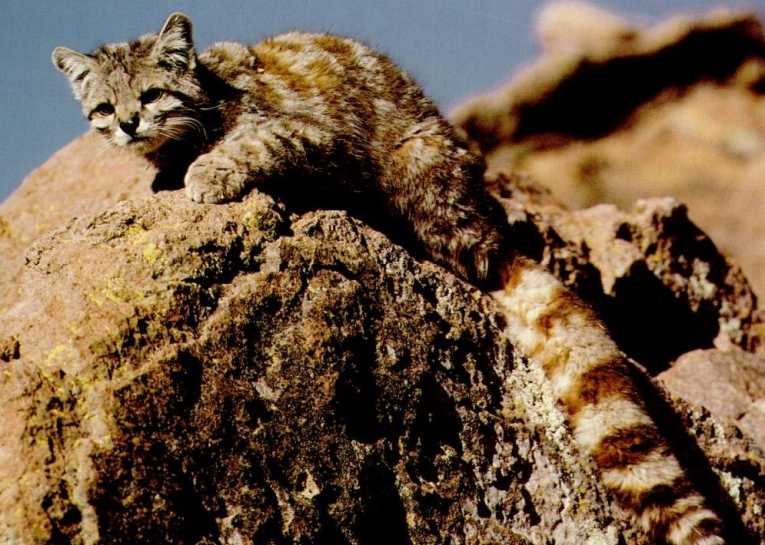An elusive species of feline has been discovered to inhabit a much bigger range than was ever previously imagined.
The rare and enigmatic Andean cat (Leopardus jacobita) was once thought to be confined to the higher elevations of the Andes Mountains in Argentina, Bolivia, Chile and Peru.
However, a new survey, carried out by the Wildlife Conservation Society (WCS) and its partners, has found evidence that this endangered feline also occurs on the Patagonian steppe, marking a huge expansion in its known range.
Generally, the Andean cat was considered to be restricted to elevations of above 3,000 metres.
A single photograph of two Andean cats in the foothills of Argentina convinced the WCS researchers and their team to extensively survey 31,000 square kilometres of Argentina's Mendoza and Neuquen provinces. Their gamble paid off, and the researchers uncovered evidence of the cats occurring at elevations as low as 650 metres on the Patagonian steppe.
Samples from several locations, including scat, skulls and skin, were all confirmed with DNA analysis.
WCS conservationist Andres Novaro, lead author of the study, confirms ''These records show the lowest elevations ever reported for the Andean cat. According to genetic studies underway, led by Daniel Cossios, this new population appears to represent an evolutionary lineage distinct from the highland population.''
A previous study in 2007 found that the genetic diversity of Andean Cats was extremely low across their range, making the discovery of a new, more genetically diverse population all the more important.
It is believed that the range extension of the Andean cat directly correlates with the distribution of its primary prey, the mountain vizcacha (Lagidium viscacia), a rabbit-like rodent which lives both in the Andes Mountains and the Patagonian steppe.
The biggest threats to the Andean cat are from hunting by indigenous tribes for traditional cultural practices and local herders who wish to protect their domestic livestock. Reductions in prey populations and habitat loss and fragmentation, due to mining and resource extraction, are also growing threats to this mysterious little-known feline.
Fewer than 2,500 Andean cats are thought to exist in the wild, and it is listed as Endangered (EN) on the IUCN Red List. The new findings will play an important role in helping conservationists to plan more effective conservation measures to secure the future of this rare and beautiful species.
(Image Credit Copyright 1995 Urban D. Mueller)










